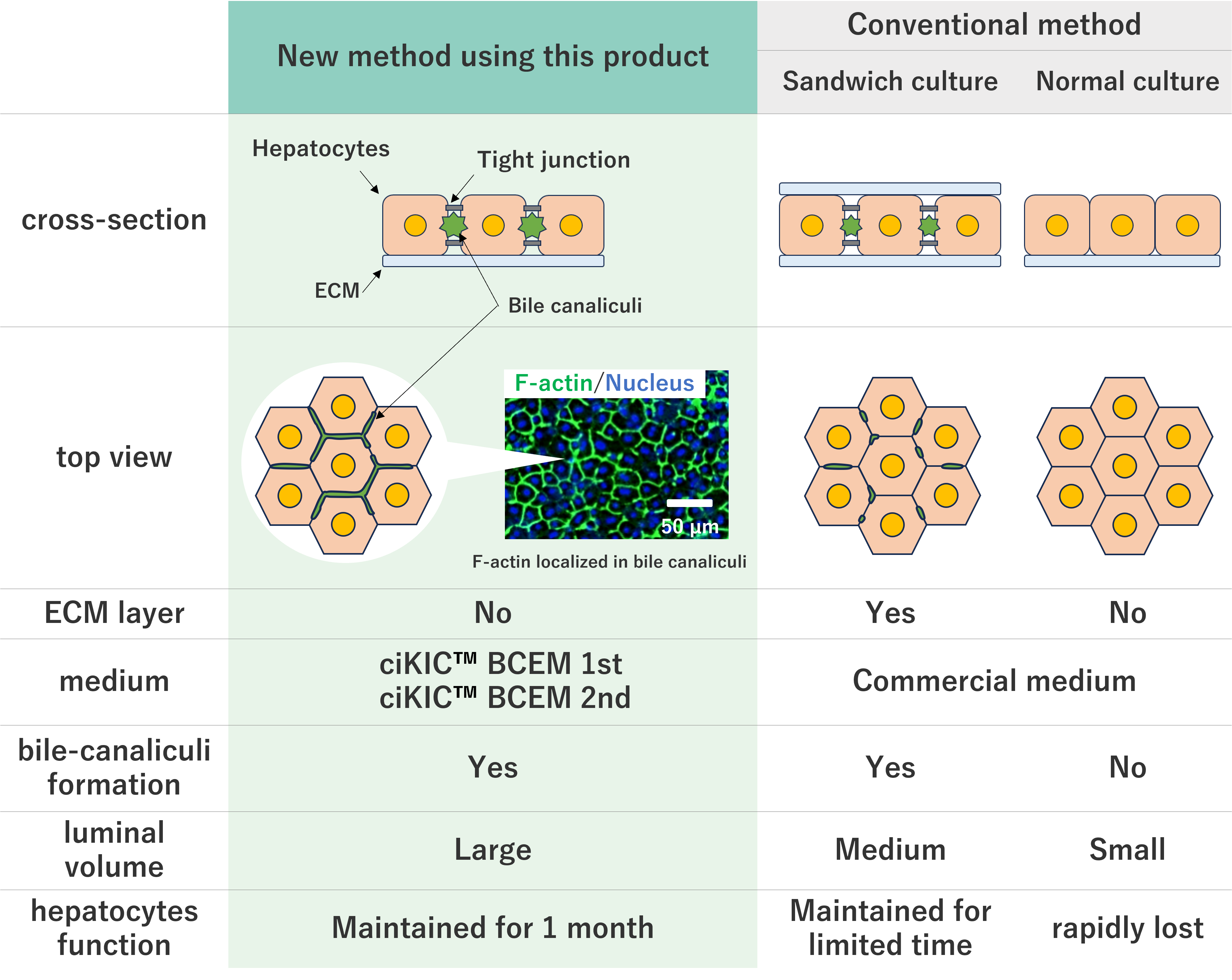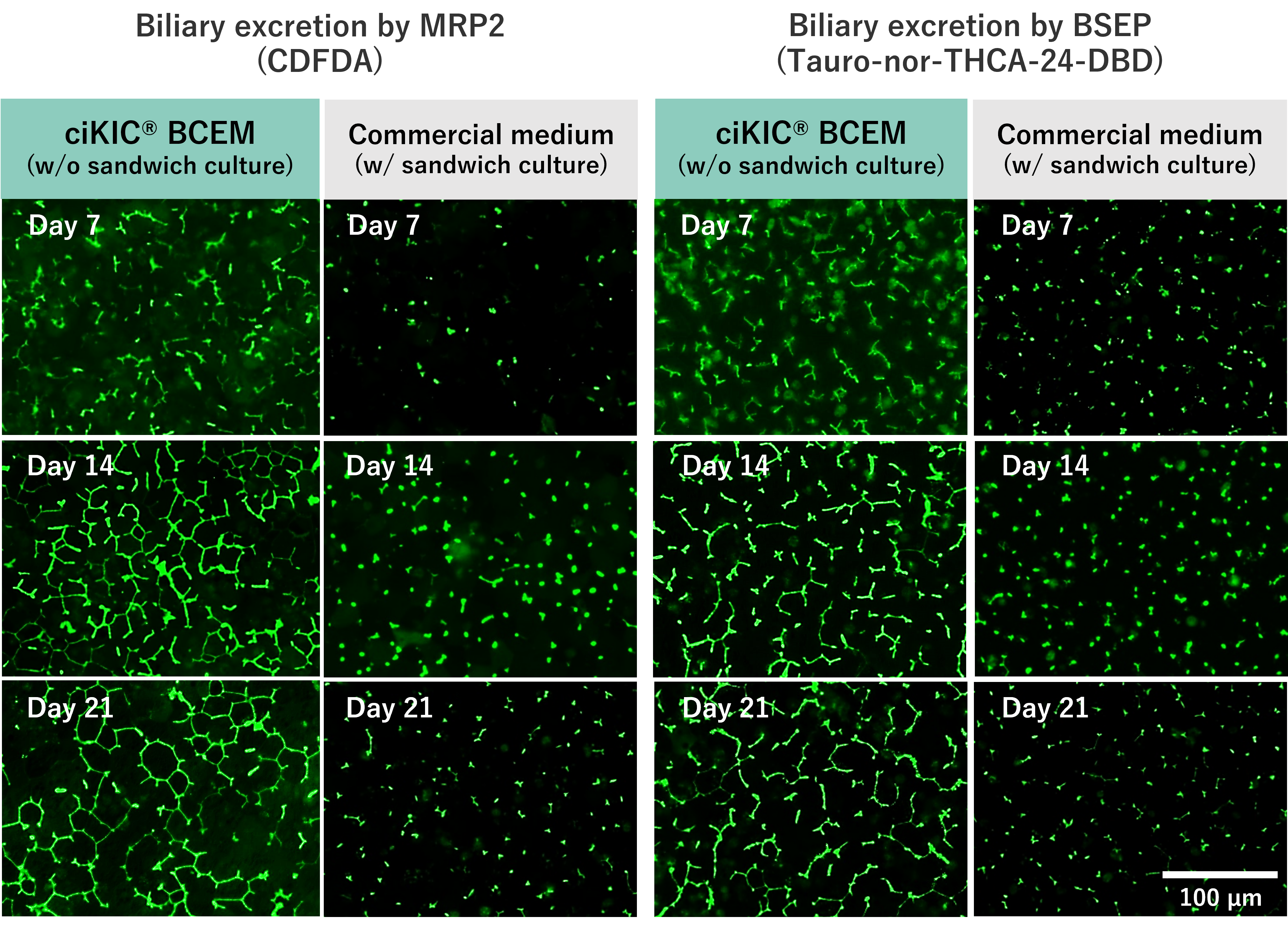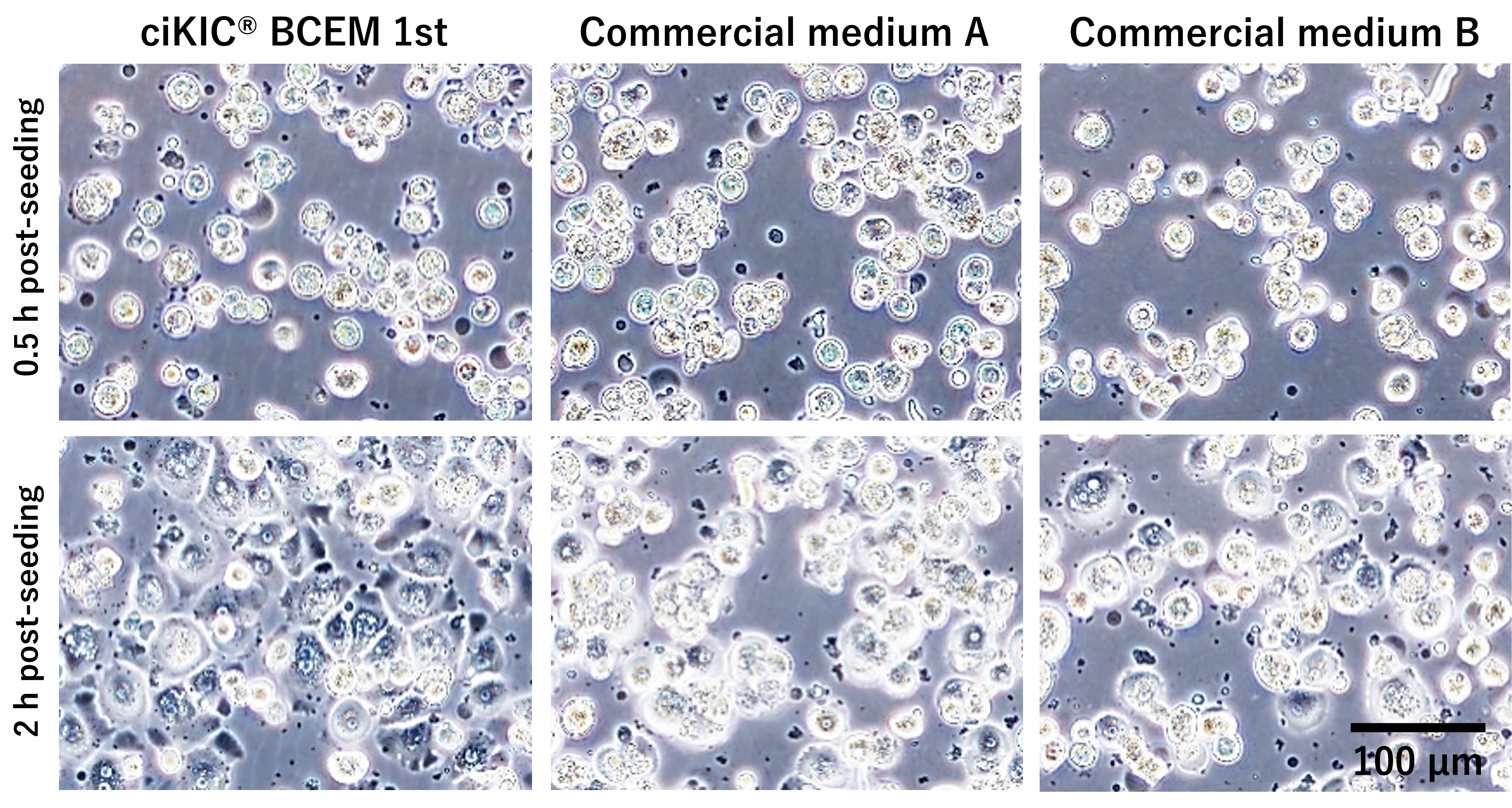ciKIC™ BCEM 1st & 2nd
ciKIC™ BCEM 1st & ciKIC™ BCEM 2nd—innovative media for advanced hepatocyte culture—enabling the formation and long-term maintenance of highly functional bile canaliculi without the complexity of sandwich culture. They are ideal for in vitro evaluation of biliary clearance and cholestatic toxicity, as well as enhancing cell adhesion and enabling long-term culture.

Features
1.Forms extended bile canaliculi networks without sandwich culture
2.Reproduces hepatocyte biliary excretion, useful for bile clearance and cholestasis tests
3.Improves hepatocyte adhesion
4.Supports long-term hepatocyte culture
Feature 1—Forms extended bile canaliculi networks without sandwich culture
Sandwich culture is a technique for promoting bile canaliculi formation in hepatocytes by placing the cells between two layers of extracellular matrices (ECM) such as type I collagen. However, this method raises concerns about an insufficient volume of bile canaliculi due to their short and thin morphology, as well as drug adsorption to the ECM. Unlike this conventional method, our media enable the formation of bile canaliculi with sufficient volume without the need for ECM layering.

Feature 2—Reproduces hepatocyte bile acid excretion
We evaluated biliary excretion function in primary human hepatocytes cultured with our media by adding fluorescent substrates—CDFDA and Tauro-nor-THCA-24-DBD—targeting bile acid transporters MRP2 and BSEP. Compared to the conventional sandwich culture method, greater accumulation of these fluorescent substrates in the bile canaliculi was observed. Using our media “ciKIC™ BCEM 1st & ciKIC™ BCEM 2nd" enables sustained high biliary excretion function over extended culture periods.
Feature 3—Improves hepatocyte adhesion
When "ciKIC™ BCEM 1st" was used at the time of seeding primary human hepatocytes, a large number of cells were observed to have adhered and spread within 2 hours after seeding, suggesting that it is effective in promoting early hepatocyte adhesion.
Bright-field microscopy images of primary human hepatocytes after seeding
Feature 4—Supports long-term hepatocyte culture
Product Information
| Code | Product Name | Compontents | Storage | Price | |
|---|---|---|---|---|---|
| - | ciKIC™ BCEM 1st | Basal medium | 50 mL×1 | below -20℃ |
Inquiry |
| Supplement | 0.5 mL×1 | ||||
| - | ciKIC™ BCEM 2nd | Basal medium | 50 mL×1 | below -20℃ | Inquiry |
| Supplement 1 | 1 mL×1 | ||||
| Supplement 2 | 0.4 mL×1 | ||||
How to use
Instructions for Use
1. Thaw each basal medium and each supplement at room temperature.
2. Add each supplement to the corresponding basal medium (rinse each supplement container once before use). Add commercial antibiotics such as penicillin-streptomycin solution as appropriate.
3. Mix the medium container by gentle inversion until fully blended. Use within 3 weeks after preparation.
4. Store the prepared medium refrigerated in the accompanying aluminum bag.
Reagents Preparation
• ciKIC™ BCEM 1st
• ciKIC™ BCEM 2nd
• Commercial penicillin-streptomycin solution
• Commercial primary human hepatocytes (cryopreserved hepatocytes)
• Commercial hepatocyte thawing medium (hepatocytes manufacturer recommended)
• Type I collagen-coated 96-well plates
•Wide-bore pipette tips (for cell seeding)
Example Protocol for Primary Human Hepatocytes
1. Warm all media to 37℃ before use.
2. Designate Tuesday as Day 0; thaw primary human hepatocytes according to the manufacturer’s instructions using the recommended thawing medium.
3. After centrifugation, resuspend the cell pellet in "ciKIC™ BCEM 1st" to prepare a cell suspension.
4. Prepare type I collagen-coated 96-well plates and seed cells. Recommended seeding density: 1.0 × 105 cells/well Recommended medium volume: 75 µL/well (96-well plate)
5. Perform a full medium change 4 hours after seeding (75 µL/well).
6. From Day 1 onward, change medium daily on weekdays (no changes on weekends).
7. At Day 3 medium change, switch to "ciKIC™ BCEM 2nd" and continue culture.
8. Perform assays at desired time points.
Tips
- It is recommended to check the optimal seeding density for each lot of primary human hepatocytes. Based on our experience, higher densities tend to promote the bile canaliculi formation.
- When homogenizing the cell suspension on Day 0, avoid pipetting as much as possible; instead, mix by gentle inversion.
- When removing medium during medium changes, use a micropipette rather than an aspirator.
Contact Us
E-mail Inquiry Form
Telephone


